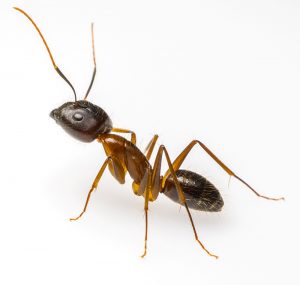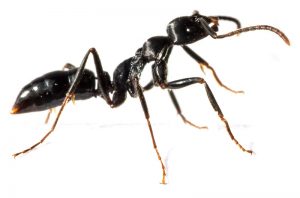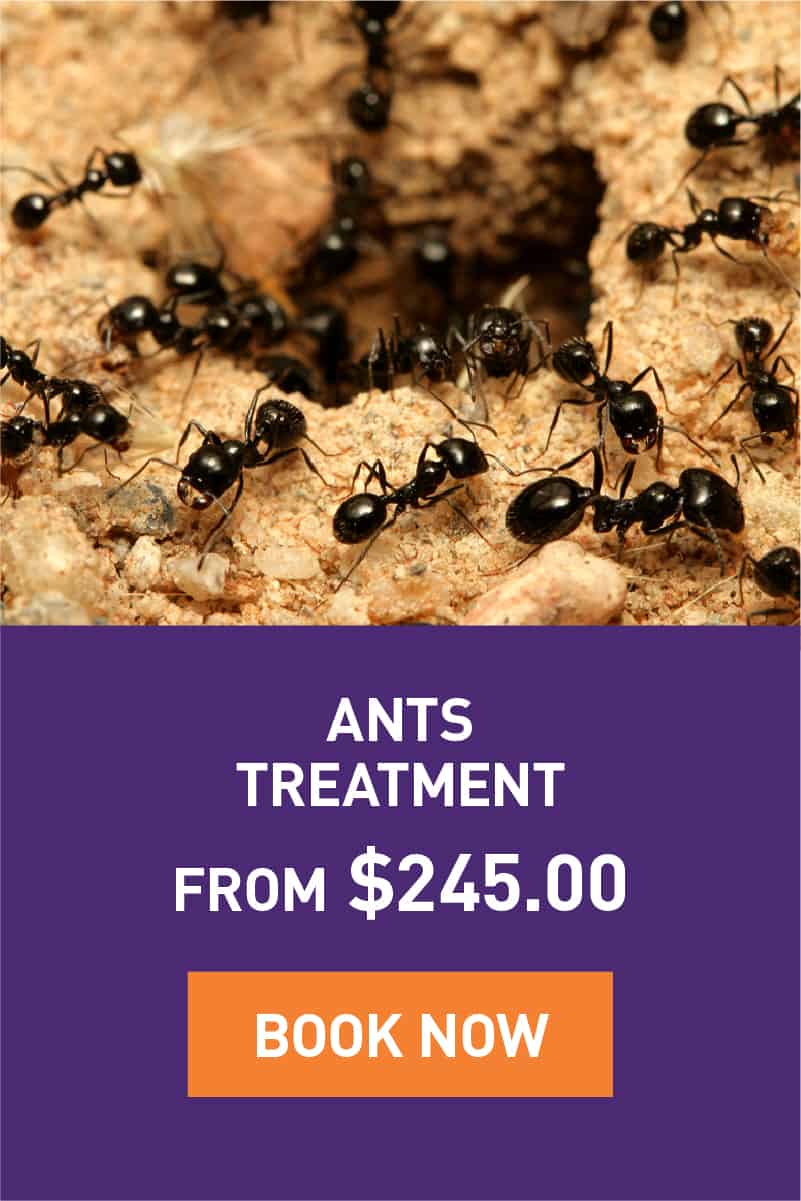OUR PEST CONTROL PLAN WILL SHUT DOWN ANTS AND OTHER PESTS.
Our advanced solutions adapt with seasonal pest activity. Guaranteed.
Looking for pest control for ant problem Pestpro can help.
When ants invade your home or business, they can get everywhere, especially into food. They’re relentless and unsightly and because they’ve probably been in unsanitary areas, it’s important to protect your family.
Just spraying ants is a waste of time. You’re killing a few on the surface and doing nothing to the thousands in the nest.
We’ll shut down ants before they come marching in
In Perth, the coastal brown ant invades homes or commercial premises, causing a nuisance. Appliances can short out becoming a fire hazard. Ants can also spread disease.
The white-footed house ant, also found in Perth, enjoys sweet-tasting food and can also cause damage to appliances, including short-circuiting air conditioning units.
Pestpro uses proven techniques for the swift and safe management of ant colonies whilst preventing their return.
Simple Prevention
Cleanliness is the key to not attracting ants indoors. Surfaces should be kept clean of spills and food remnants and stored food should be kept in clean, tightly closed containers.
If you’re considering implementing our professional ant baiting program, please DO NOT disturb the ants by using domestic inspect spray or products as this could reduce the effectiveness of our treatment.
Our Process
As the majority of ant species prefer sunny climates, our environment is perfect for ants to thrive. Ants are ubiquitous. Out of around 15,000 ant species and subspecies worldwide, Australia has just over 1,300 known species so far. The most familiar ant species in Australia are:
- Bulldog or bull ants (Myrmecia sp.)
- Carpenter ant (Camponotus spp.)
- Coastal Brown ant (Pheidole megacephala)
- Common Black House ant (Ochetellus sp.)
- White-Footed house ant (Technomyrmex sp.)
Ants can be a particular nuisance when they get into your home or business. the trouble is you don’t know where they’ve been foraging outside, so you won’t want them marching through your food cupboards. Ants will travel in a wide range searching for food, following trails they have established and clustering around the source of food, becoming a nuisance in homes, organisations and businesses. Small piles of earth around holes in soil and at the base of exterior walls indicate their origin.
- Track down where they are coming in and seal off the entry point
- Clear up any sticky residues on worktops, because ants are attracted to sweet things
- Cover up any foodstuffs which could be a food source for ants
If you have a larger problem that your usual DIY product cannot resolve, you can rely on our expert pest controllers to clear it up.
Our Pest Control Technicians offer methods of ant control that are targeted to specific species. They can solve the problem quickly and, needless to say, they’re perfectly safe for your family and pets.
 Coastal brown ant (Pheidole megacephala)
Coastal brown ant (Pheidole megacephala)
Appearance
- About 1.5-2.5mm long.
- Tend to be yellow brown to brown.
Lifecycle
- Eggs laid are small in size.
- Larvae are fed by the adults and after several moults the larvae pupate.
- Once adults, 3 different castes exist:
– Workers are wingless and sterile that lives for approximately a year. Workers are the nest-builders, food suppliers, feed larvae, look after eggs and defend the nest.
– Males are winged and exist to mate with females.
– Females are also winged until after mating and are also the largest in size. Females become the reproductive queen of the colony and live for many years.
Habits
- Nest in soil and build along pathways around the house including gardens and walls.
- Dry areas for nesting.
- Will excavate leaving mounds along foot paths and other areas that are unsightly.
- Will attack foods around the property including meat, sweets, fruit and greasy foods.
 Whitefooted house ant (Technomyrmex difficilis)
Whitefooted house ant (Technomyrmex difficilis)
Appearance
- Dark brownish / black colour.
- Yellow-white feet.
- Approx 3mm in length.
Lifecycle
- A colony can contain up to a million ants, thus these are very invasive ants which can be hard to eradicate.
- Nearly half a colony is made up of fertile females so reproductive capabilities are huge. These are winged and larger than wingless females.
- Winged males mate once before they die, wingless males are capable of multiple mating.
- Adult workers are wingless females and are the ones seen looking for food.
Habits
- They do not bite or sting.
- Although colonies are vast in numbers, they tend to spread out into satellite colonies which nest in different locations.
- Ideal nesting locations outside include trees – in trunks or galleries that might have once been created by termites, under loose bark or plant debris, nearer the home in attics, under roof shingles, in wall voids, along fences and in outdoor furniture. Indoors they can be found in the kitchen area near bins or where food is stored or prepared.
- These ants are attracted to sweet substances – plant nectars, flowers and sweet human food substances. Also attracted to aphids and mealy bugs which secrete honeydew.
- Most likely to be seen foraging for food in large numbers, most likely at night if temperatures are high.


















